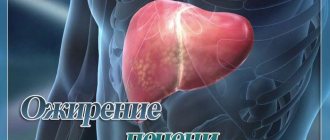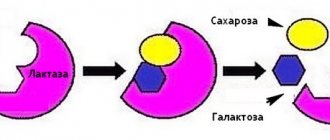The problem of obesity affects more and more people every year. If previously excess weight appeared in older people, today young people, teenagers, and children also face it. The self-isolation regime that Russians were forced to observe for several months only worsened the problem. Obesity in Russia is growing at a rapid pace and is already evident in every second person.
Why is there an obesity epidemic? How does it threaten people's health? And most importantly, how to get rid of excess weight if you already have it? We asked Svetlana Leonova, an endocrinologist of the highest category, head of the department of the MEDSI clinic on Blagoveshchensky Lane, to answer these questions.
Causes of obesity
“The main cause of obesity is nutritional imbalance,” comments the specialist. “Eating too many carbohydrates along with low physical activity leads to the accumulation of fat in the body.”
There are factors that increase the risk of obesity.
Heredity. Currently, many genes responsible for weight gain have been identified. They enhance the transition of carbohydrates to fats and inhibit the processes of fat mobilization. This leads to damage to pancreatic tissue and ultimately to its depletion and the development of diabetes. If there are people in the family who suffer from obesity or diabetes, there is a high probability that the predisposition to these diseases will be “inherited” to the children.
Age. After 40 years, hormonal changes occur in the body. Metabolism decreases, and the rate of oxidative processes in organs and tissues increases. This leads to disruption of fat metabolism, even if a person follows a dietary regime and tries not to overeat.
Profession. There are professions in which the problem of excess weight is especially common. According to statistics, 40% of chefs suffer from it, and men who work in an office are overweight more often than workers. At the same time, obesity in men is less common than in women, which is due to hormonal characteristics and different amounts of muscle tissue in the body.
“One of the factors that significantly increases the predisposition to obesity is a sedentary lifestyle with adequate nutrition,” says endocrinologist Svetlana Leonova. — Lack of physical activity leads to disruption of the central nervous regulation of appetite. A person receives more energy from food than he expends.”
Obesity classification
There is a certain obesity classification that is used by doctors to prevent and treat obesity. Depending on what signs of obesity are noticed in the patient, doctors at the Rehab Family clinic identify different types and types of obesity. First of all, the cause is determined, on the basis of which doctors distinguish primary or secondary obesity. Primary obesity is the most common, and it occurs due to excessive consumption of calories that are not used by the body. Secondary obesity is associated with disturbances in the functioning of the body. Most often, the body’s endocrine system works “wrongly,” and as a result, a person’s metabolism is seriously disrupted. Obesity is also divided into types according to the dislocation of fat deposits, however, this does not have a direct connection with the purpose of treatment.
Obesity levels
Doctors use a measure called body mass index (BMI) to determine the severity of the disease. It helps to understand how much fat tissue in the body exceeds the normal level. The body obesity index can be determined using the formula:
(Weight (kg) / height (m))2
For example, a woman’s weight is 90 kg and her height is 165 cm. Let’s calculate her obesity index. It is: (90/165)2 = 29.75, which corresponds to the second degree of obesity. Risks to human health depend on this indicator.
Obesity 4 degrees in children
The incidence of chronic pathology in children is 8%. Childhood obesity is difficult to treat. Causes of the disease:
- overfeeding;
- limited mobility;
- psychological problems;
- poor nutrition;
- hereditary factors;
- pituitary dysfunction;
- artificial feeding;
- endocrine diseases;
- Down syndrome;
- skull injuries;
- hormonal imbalance in adolescence.
Childhood obesity has the following pathogenesis:
- Eating too much increases insulin production.
- Hypoglycemia develops, which provokes hunger.
- Overeating increases the amount of adipose tissue and changes the function of the hypothalamus.
- Increased production of adrenocorticotropic hormone impairs sensitivity to hunger and satiety signals.
- A new portion of food is required.
An obese child, in addition to pathologies of the heart and blood vessels, develops diseases of the joints, spine, and mental disorders. Medicines are not used to treat children. Treatment tactics include:
- diet;
- physical therapy classes;
- swimming;
- physiotherapy (mud therapy, shower, bath);
- active games in the air;
- massage;
- surgical methods (rarely, with a doubling of weight).
Table - stages of obesity
| BMI | Obesity level | Recommendations |
| No | ||
| 18,5–24,9 | 1st degree | No treatment required. |
| 25–29.9 without concomitant diseases | 2nd degree | Low-calorie diet and increased physical activity to prevent weight gain. |
| 25–29.9 with concomitant diseases 30–34,9 35–39,9 | 3rd degree | Drug therapy in combination with hypocaloric nutrition and increased physical activity, behavioral therapy. |
| >40 | 4th degree | Surgical intervention |
“An increase in waist circumference can also be a symptom of obesity,” says Svetlana Leonova. - If in a man this figure exceeds 94 cm, and in a woman - 80 cm, and at the same time the blood pressure is above 140/90 mm Hg. Art., you need to consult an endocrinologist.”
Doctors view obesity not as an aesthetic problem, but as a real threat to the life and health of the patient. As you gain weight, you may experience headaches, dizziness, malaise, and increased fatigue. Due to the excess load on the circulatory system, blood pressure jumps, problems with the heart and kidneys may develop, which is manifested by the appearance of edema, and increases the risk of stroke and heart attack.
Excess weight increases the load on the joints, which causes pain and inflammation in them. Men can develop sexual dysfunction, and all this is a consequence of excess weight, which many people still do not consider a problem.
Symptoms of terminal obesity
With the development of the pathology of overweight - obesity of the last degree, patients observe the following symptoms that affect all body systems, as well as internal organs and the musculoskeletal system:
- The development of pathologies of the blood flow system, leading to an increase in blood pressure index and arterial hypertension. At the fourth stage of obesity, many patients are diagnosed with systemic atherosclerosis due to hyperglycemia. In men, most often, at stages 3 and 4 of obesity, obliterating atherosclerosis of the lower extremities is diagnosed, which is often accompanied by varicose veins. The blood becomes viscous if you are overweight, causing thrombosis and insufficient blood circulation to the brain, which can result in a cerebral stroke;
- Stage 4 obesity provokes the occurrence of cardiac pathologies - tachycardia, angina pectoris and arrhythmia, as well as ischemia of the cardiac organ. The fat around the myocardium rapidly grows and tightens the muscular part of the heart, which significantly disrupts the process of blood flow in the heart and the myocardium pumping a sufficient volume of blood. As a result, organ ischemia occurs, which at stage 4 obesity often provokes myocardial infarction;
- Due to poor blood supply to the internal organs, their hypoxia occurs, causing organ failure, and they stop functioning, which ends in death;
- Shortness of breath and pathologies of the respiratory system appear. The respiratory organs do not receive the required amount of blood when its circulation is impaired. With poor resistance, pneumonia begins in the lungs, and quite often with grade 4 obesity, the symptom is the pathology of pulmonary tuberculosis;
- Increased body weight greatly strains the human bone and muscle system, which manifests itself in osteochondrosis, arthritis and arthrosis, gout and constant pain in bone and muscle tissue. Sometimes this pain is so severe that a patient with stage 4 excess weight cannot rest without taking painkillers.
Increased body weight greatly strains a person’s skeletal and muscular system.
Types of obesity
Fat tissue in the body can accumulate unevenly, concentrate in certain areas and cause characteristic diseases.
- Abdominal obesity. Fat concentrates in the abdominal area and around the internal organs. Doctors consider this type of disease to be the most dangerous, since it most often causes the development of diabetes mellitus, hypertension, and significantly increases the risk of stroke and heart attack.
- Femoral-gluteal. Fatty tissue accumulates in the buttocks and thighs, which is usually observed in women. Additional fat mass increases stress on the spine and legs, causing back pain, problems with joints and blood vessels.
With a mixed type, adipose tissue is distributed evenly throughout the body.
Etiology of obesity 4 degrees
The main reasons for the accumulation of extra pounds in the body, which lead to grade 4 obesity, are considered to be:
- Sedentary lifestyle;
- Poor nutrition. The diet is dominated by foods high in fat and carbohydrates;
- Constant overeating;
- Failure in the endocrine system and changes in hormonal levels;
- Complications after intoxication of the body;
- Insufficient amount of iodine in the body;
- Genetic predisposition;
- Insufficient hours of sleep;
- No load on the body;
- Stressful situations.
Do they take it for class 1 obesity?
Obesity of the 1st degree is not considered a serious pathological process. Accordingly, conscripts can serve in full without special restrictions. At least when it comes to the conscript army.
Contract workers have minor restrictions until they completely normalize their body weight.
Obesity of the 1st degree does not pose a serious health risk, because such conscripts usually regain adequate weight during the service itself and can serve without any special restrictions. Category - "A".
Will grade 3 obesity be accepted into the army?
Obesity of the 3rd degree is characterized as a condition for assigning category “B”. Such young people do not serve in the army in peacetime. During military operations, they form parts of the second stage: support, auxiliary rear structures, etc.
The pathological process poses a real danger to the body, therefore such people are not fit for service. If an excessive increase in body weight is detected, there are several options for the development of events:
- The person is temporarily assigned category "G". Doctors take this step when there is reason to believe that the situation can be brought back to normal within six months. Then the person is referred for specialized treatment. Six months later, the commission is re-conducted and a final decision is made.
- If the condition is again not associated with poor nutrition, fitness category “B” is assigned immediately. A person is sent to the reserves and receives a military ID. Such conscripts are also not sent to military training, since they are released for health reasons.
Obesity of the 3rd degree almost always prevents military service. The chances of quickly regaining weight in the allotted short time are very small.











